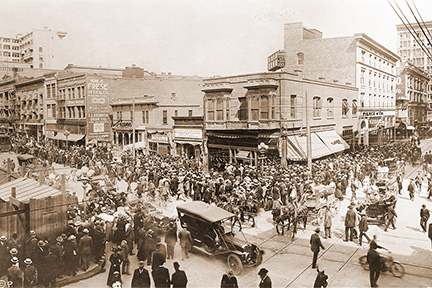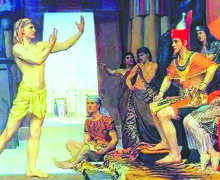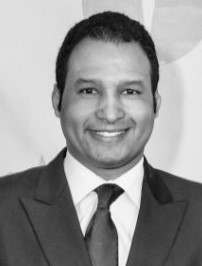
Fundación de Los Ángeles
Los Angeles Foundation
En la Placita Olvera, en pleno centro de ciudad de Los Ángeles, se erige la estatua de “Felipe de Neve”, nacido en Andalucía, España, en 1728 y fallecido en Los Ángeles, California, en 1784, Gobernador de California entre 1775 y 1782.
Imperio en California
Felipe de Neve fue una figura clave en el descubrimiento y establecimiento del Imperio de California para la corona española, un año antes de la declaración de la Independencia de los Estados Unidos de América en 1776, formado en ese entonces por 13 colonias, luego estados, todos en el este del continente.
En realidad las tierras californianas ya habían sido descubiertas en el siglo XVI; pero fue Felipe de Neve quien estableció asentamientos, creó poblamientos e hizo autosuficientes las agrestes e ignotas tierras, fundando el 4 de septiembre de 1781 “El Pueblo de Nuestra Señora la Reina de los Ángeles del Río Porciúncula”. El nombre tiene sus orígenes en una tradición del siglo XIII, cuando San Francisco de Asís recibió la orden divina de levantar una capilla sobre un pequeño terreno (porciúncula, en italiano) en honor de la madre de Cristo.
La Corona Española.
Los reyes españoles pensaban que los ingleses o portuguese invadirían las lejanas tierras del oeste del nuevo continente, ya que suponían que estaban prácticamente deshabitadas y creían que estaban expuestas a ser tomadas por otros reinos.
Por esta razón Felipe V, que gobernó entre 1700 y 1746, incentivó la expansión hispana por toda la costa oeste, desde el desierto de California hasta las nieves de Alaska, orden confirmada por Carlos III, que gobernó entre 1759 y 1788, quien firmó un decreto real en 1765 que ordenaba seguir avanzando hacia el norte lo más posible, creando nuevas misiones.
La expansión hacia el sur del Imperio de California estaba a cargo de José Bernardo de Gálvez y Gallardo, quien siguiendo órdenes reales crea 17 nuevos asentamientos incluyendo Texas, Nuevo México y Sinaloa.
Es el mismo Carlos III quien nombra Gobernador del Virreinato del Imperio de California a Felipe de Neve, casi obligándolo ya en realidad “Nadie quería asentarse en aquellas extremas tierras aún poco exploradas y peligrosas”, dice el historiador Vicente G. Olaya.
Recordemos que el nuevo gobernador contaba con un ejército de 146 soldados, y tenía que velar por la seguridad de 18 misiones que se extendían en una superficie aproximada de dos millones de kilómetros cuadrados, incluso en un informe se quejaba que “Las escopetas son de distintos calibres y no ofrecen seguridad alguna y los sables son completamente inútiles, cortos y quebradizos y tenemos muy pocas lanzas”.
Los Ángeles.
Un gran desafío fueron las insurgencias de los pueblos originarios, que no eran ni tan dóciles ni tan amigables como los de la costa este. Felipe de Neve primero combatió a las tribus, pero ante la posibilidad de ser derrotado, prefirió cambiar la estrategia y convivir con ellos.
Promovió la interculturalidad y amenazó a sus soldados con castigar severamente cualquier atropello contra los pueblos originarios, realizando un reparto equitativo de tierras entre los civiles, ya que era común que los soldados se quedaran con las mejores tierras,
En el momento de su fundación Los Ángeles estaba formada por 14 familias mestizas, mulatas, indígenas y peninsulares que terminó en matrimonios mixtos.
La relación entre españoles e indios desató las quejas de los religiosos, ya que los colonos no forzaban a los nativos a bautizarse, ni a permanecer por la noche en el pueblo o hablar español.
San José de Guadalupe
Felipe de Neve fundó como gobernador San José de Guadalupe (hoy San José) en 1777, tratando de ampliar los dominios de su Imperio, esto le costó no regresar a España, ni ver a su familia nunca más, muriendo en el pueblo que el fundo tres años antes, “Nuestra Señora la Reina de los Ángeles del Río Porciúncula”
In the Placita Olvera, in the heart of the city of Los Angeles, stands the statue of “Felipe de Neve”, born in Andalusia, Spain, in 1728 and died in Los Angeles, California, in 1784, Governor of California between 1775 and 1782.
Empire in California
Felipe de Neve was a key figure in the discovery and establishment of the California Empire for the Spanish crown, a year before the declaration of Independence of the United States of America in 1776, formed at that time by 13 colonies, later states, all in the east of the continent.
In reality, the Californian lands had already been discovered in the 16th century; But it was Felipe de Neve who established settlements, created towns and made the wild and unknown lands self-sufficient, founding on September 4, 1781 “The Town of Our Lady the Queen of the Angels of the Porciúncula River.” The name has its origins in a tradition from the 13th century, when Saint Francis of Assisi received the divine order to build a chapel on a small piece of land (porziuncula, in Italian) in honor of the mother of Christ.
The Spanish Crown.
The Spanish kings thought that the English or Portuguese would invade the distant western lands of the new continent, since they assumed that they were practically uninhabited and believed that they were exposed to being taken over by other kingdoms.
For this reason Philip V, who ruled between 1700 and 1746, encouraged Hispanic expansion along the entire west coast, from the California desert to the snows of Alaska, an order confirmed by Charles III, who ruled between 1759 and 1788, who signed a royal decree in 1765 that ordered to continue advancing north as much as possible, creating new missions.
The southern expansion of the California Empire was led by José Bernardo de Gálvez y Gallardo, who following royal orders created 17 new settlements including Texas, New Mexico and Sinaloa.
It is Charles III himself who appoints Felipe de Neve as Governor of the Viceroyalty of the Empire of California, almost forcing him in reality. “No one wanted to settle in those extreme lands that were still little explored and dangerous,” says historian Vicente G. Olaya.
Let us remember that the new governor had an army of 146 soldiers, and had to ensure the security of 18 missions that extended over an approximate area of two million square kilometers. In one report he even complained that “Shotguns are of different types.” calibers and do not offer any security and the sabers are completely useless, short and brittle and we have very few spears.
The Angels.
A great challenge was the insurgencies of the native peoples, who were neither as docile nor as friendly as those on the east coast. Felipe de Neve first fought the tribes, but faced with the possibility of being defeated, he preferred to change his strategy and live with them.
He promoted interculturality and threatened his soldiers with severely punishing any abuse against the native peoples, carrying out an equitable distribution of lands among civilians, since it was common for the soldiers to keep the best lands,
At the time of its founding, Los Angeles was made up of 14 mestizo, mulatto, indigenous and peninsular families that ended in mixed marriages.
The relationship between Spaniards and Indians unleashed complaints from the religious, since the settlers did not force the natives to be baptized, nor to stay at night in the town or speak Spanish.
Saint Joseph of Guadalupe
Felipe de Neve founded San José de Guadalupe (today San José) as governor in 1777, trying to expand the domains of his Empire, this cost him not to return to Spain, nor see his family ever again, dying in the town that he founded. three years earlier, “Our Lady the Queen of the Angels of the Porciúncula River”

























